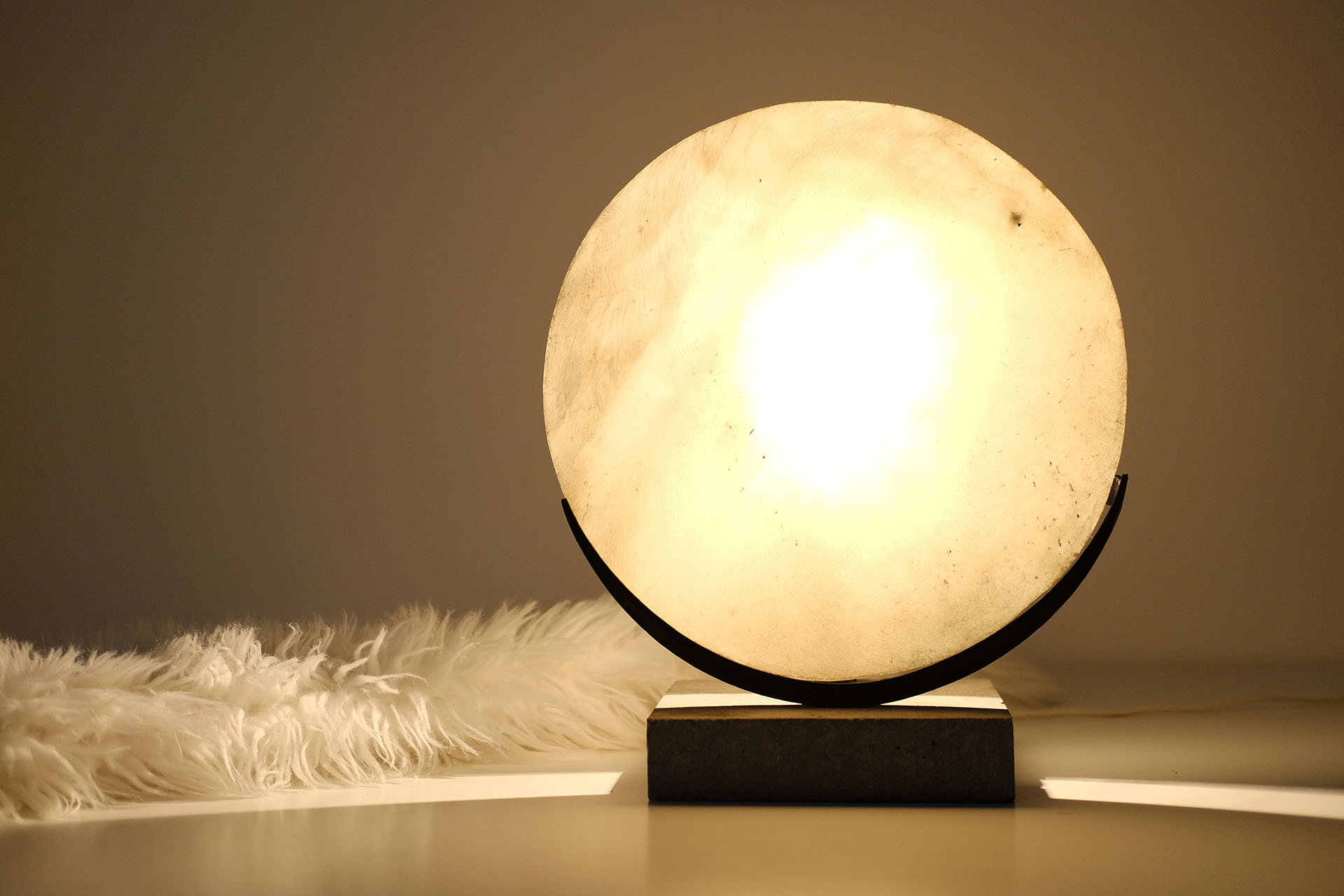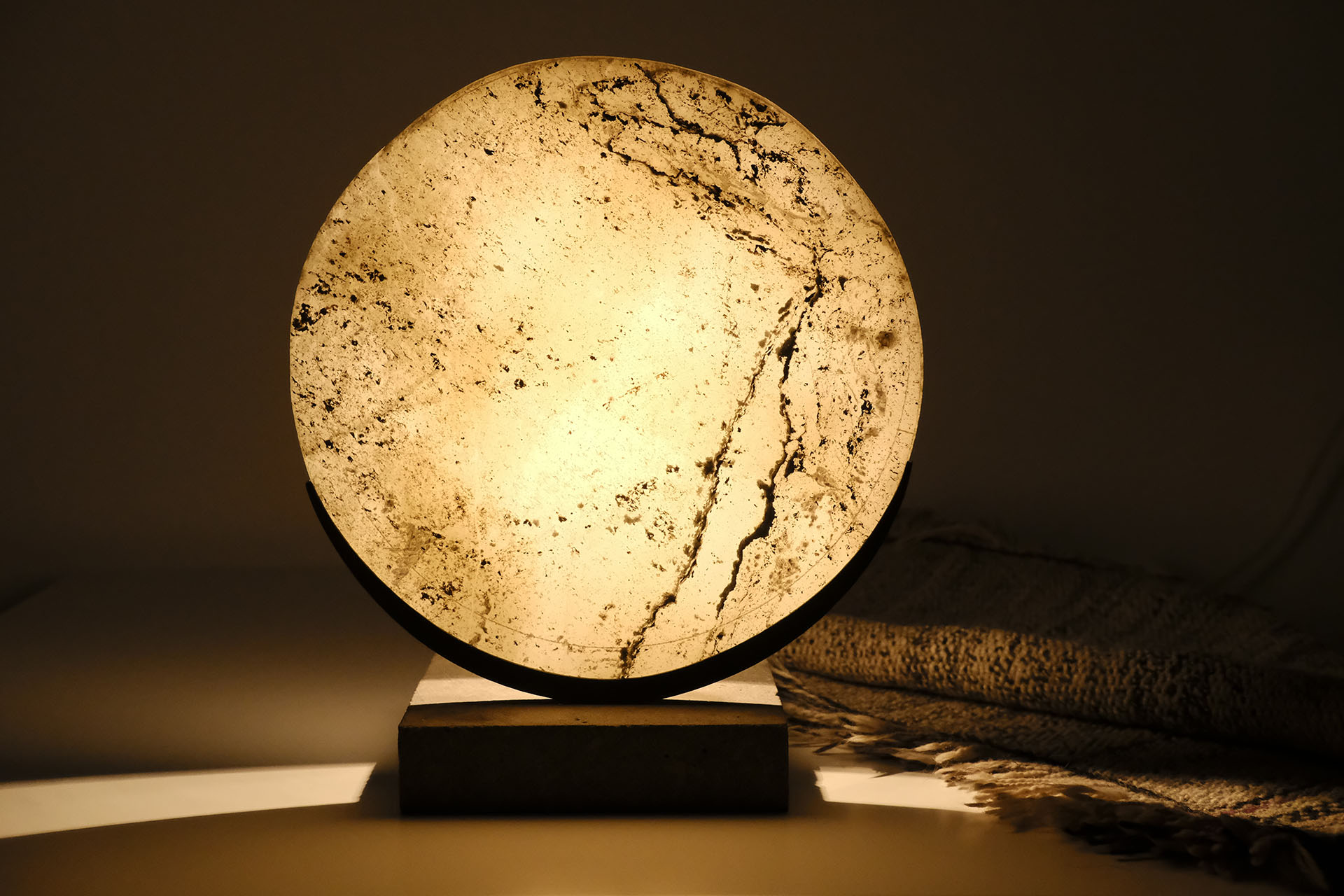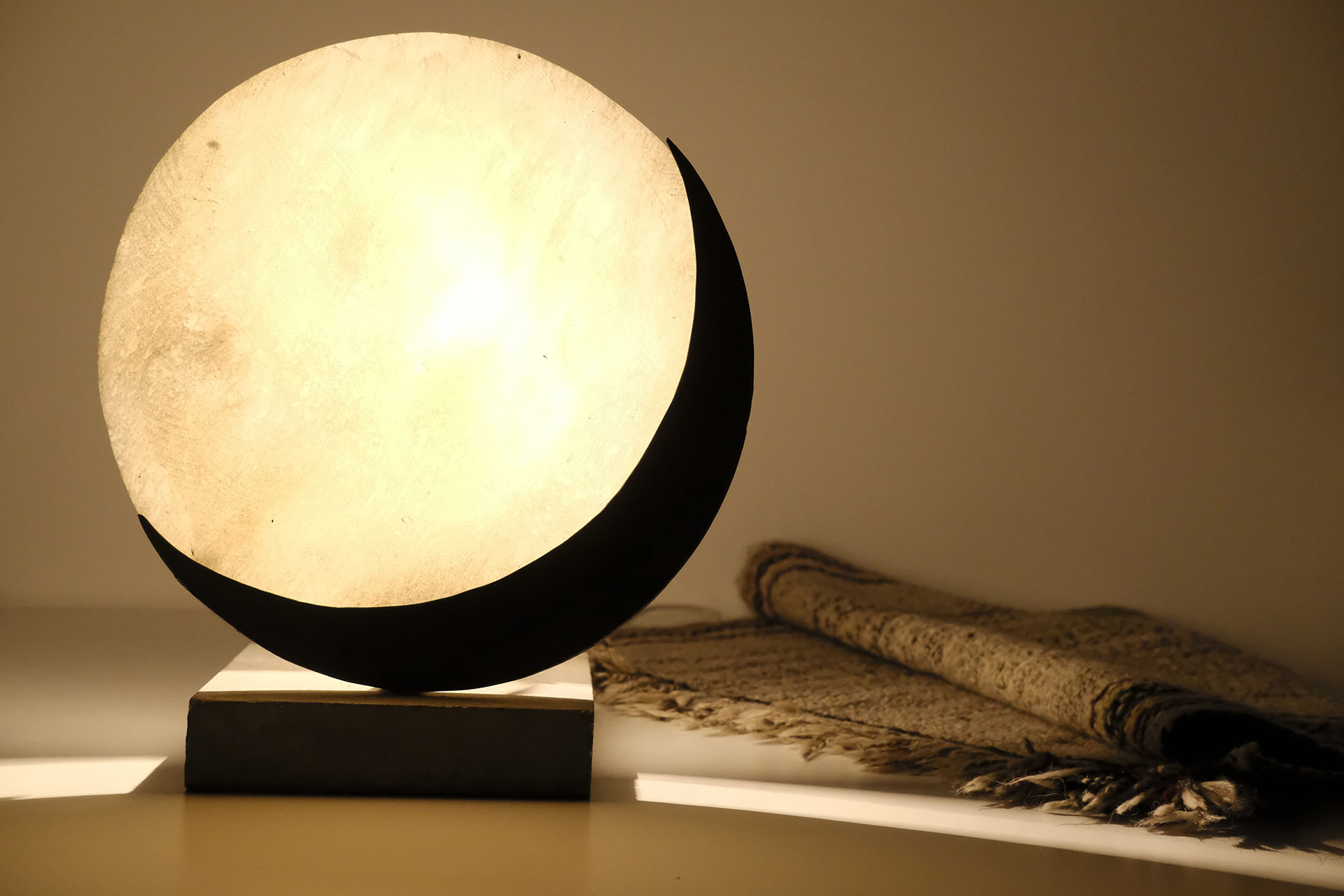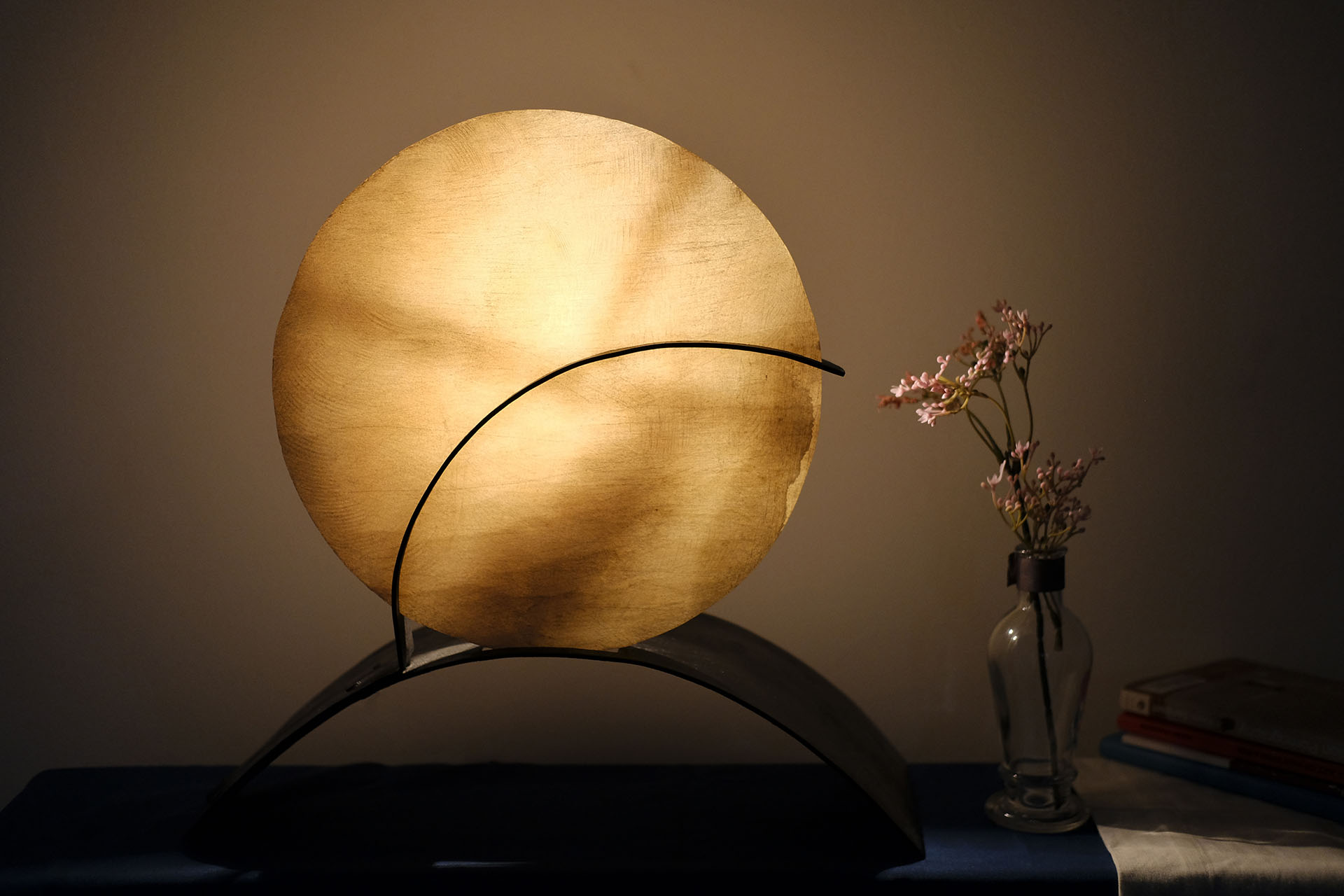The journey of our alabaster
Alabaster windows were used in Yemen since the pre-Islamic age of Sheba, and the process of mining the alabaster from underground and hand sawing it remains largely the same today as millennia’s ago. While the ancient palaces from the time of Sheba are now lying beneath Sana’a, alabaster windows can still be spotted in some of the houses of Sana’a Old City – the longest continuously inhabited capital city in the world. However, with the introduction of glass windows, one of Yemen’s most ancient handcrafts came under pressure, and the light artist we work with has dedicated his life to reviving and preserving the craft of alabaster.
The alabaster stone is a form of rock-gypsum formed underground. The Arabic word for alabaster (Hajar Al-Qamar) means moon-stone and the light filtered through alabaster stone resembles the light coming from the moon in its soft appearance, not captured by any other modern lamps. The process of hand sawing and working with the alabaster requires incredibly strength and skill and each piece of alabaster is unique and with unique formations of patterns in the stone, creating distinctive light.
Alabaster Lamps
Our alabaster lamps are designed by a Yemeni light and alabaster artist, who comes from a family that has been cutting alabaster for as long as everyone remembers. A modern interpretation of the ancient alabaster windows, the alabaster lamps are not only unique pieces of artwork in themselves, they also offer a unique moon-light glow different from any other light source.
The lamps are handcrafted and each piece of alabaster stone is unique, creating extraordinary and crystalized light streams. The lamps come as round pieces of alabaster integrated with a light bulb and a raw black metal stand in different designs, with either stone or wooden base.








